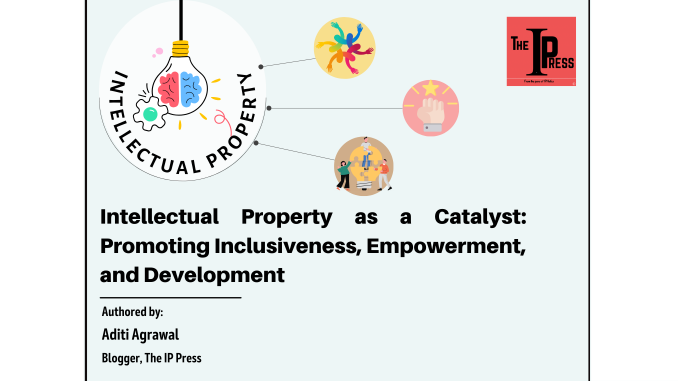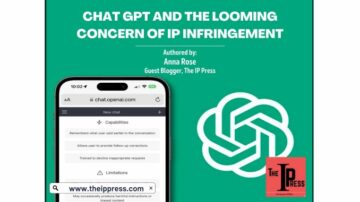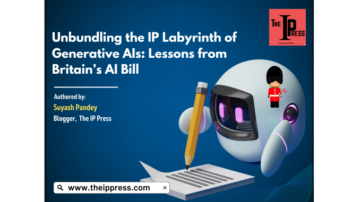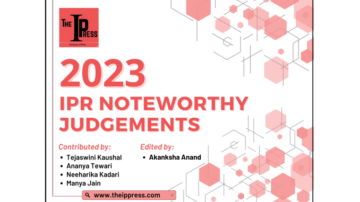

INTRODUCTION
“The future of the nation depends in no small part on the efficiency of industry, and the efficiency of the industry depends in no small part on the protection of intellectual property.”[1]
Intellectual Property Rights (hereinafter, referred to as IPR), recognized in Article 15 of the International Covenant on Economic, Social and Cultural Rights (ICESCR) as the right of everyone to “benefit from the protection of moral and material interests resulting from any scientific, literary or artistic production of which he is the author.”[2]
Intellectual Property (hereinafter, referred to as IP) serves as a powerful tool for promoting inclusiveness and empowerment, thereby, enabling individuals and communities to protect their creations, ideas, and traditional knowledge. It is one of the most important assets of large businesses, having the potential to generate more than a hundred billion dollars a year in revenues alone from patent licensing. The multibillion-dollar film, recording, publishing, and software industries would not thrive without copyright protection.[3] In addition, geographical indications are essential instruments to facilitate investments in high-quality products and niche markets and promote local trade and development. In this article, we delve into the potential and prospects of intellectual property as a catalyst for promoting inclusiveness, empowerment, and development.
THE RELATIONSHIP BETWEEN INTELLECTUAL PROPERTY & DEVELOPMENT
Development is a vast concept to define, however, important to understand since it’s among the key objectives of the global and many domestic intellectual property systems.
“When innovation, creativity and business are inclusive and embrace new ideas and perspectives, we all benefit.”[4]
There are theories on development formulated particularly in the 1960s suggesting that a system of intellectual property protection is a necessary part of the evolution of states from being “underdeveloped” to becoming “developed”.[5] Most recently, economic growth has been valued, not for its own sake, but for facilitating human freedom. Experts like the Nobel prize-winning economist Amartya Sen[6], renowned philosopher Martha Nussbaum[7] and others have called this the “capabilities approach” to development. Economic growth can provide people with more money and as a result more freedom to make choices. However, that freedom is meaningless without the capabilities to enjoy good health, food security, a clean environment, quality education, vibrant art, and cultures. Intellectual property is, in one way or another, linked to all of these essential things.[8]
Recognizing the relationship between IP and development, the World Intellectual Property Organization (WIPO) has adopted a Development Agenda, which has 45 recommendations.[9] As intellectual property encourages innovation and creativity, it contributes to the cultural and economic development of the society. Intellectual property is a subtle tool that for instance,
(i) encourages inventors, authors, and artists;
(ii) brings sustainability to the cycle of research and development;
(iii) grants protection to businesses against unauthorized use of their goodwill; and
(iv) contribute towards poverty alleviation of craftsmen who are grass-root geographical indication authorized users.
ENHANCEMENTS IN IP ADMINISTRATION AND PERFORMANCE
In 2016, India introduced its inaugural National IPR Policy, acknowledging the significant role of Intellectual Property Rights (IPR) in the contemporary economy.
Filing of applications for the protection of various Intellectual Property Rights (IPRs) in IP offices under the administrative control of the Controller General of Patents, Designs, and Trade Marks (CGPDTM) has been showing consistent growth over the years. As per the annual report (2021-22) released by the Office of Controller General of Patents, Designs and Trade Marks (CGPDTM), enhancement in IP administration, digital reforms, and reengineering of IP procedures have resulted in improved performance. These efforts have led to decreased pendency and a higher rate of disposal of IP applications. During the reporting year, patent application filing increased by 13.57%, design applications by 59.38%, and copyright applications by 26.74%.[10]
SAFEGUARDING HEALTHCARE THROUGH IPR: HIGH COSTS & LIFE-SAVING MEDICATIONS
The Indian Patent Office has granted the country’s first compulsory license[11] to Hyderabad-based Natco Pharma for the production of the generic version of Bayer’s Nexavar (sorafenib tosylate), a crucial drug for kidney and liver cancer treatment. It was established in the Bayer Corporation Vs. Union of India and Others[12] case that only 2% of the cancer patient population had easy access to the drug and that the drug was being sold by Bayer at an exorbitant price of INR 2.8 lakh for a month’s treatment.
In a similar vein, the ruling of the Hon’ble Supreme Court in the Novartis[13] case has created global ripples.[14] In 2006, Novartis applied for a patent for an anti-cancer drug, Glivec (imatinib) in India, seeking exclusive rights to produce and sell the drug but the application was rejected by the Indian Patent citing Section 3(d) of the Indian Patents Act. The case eventually reached the Supreme Court of India, and in a landmark ruling in 2013, the court upheld the rejection of Novartis’s patent application. The court’s decision was based on its interpretation of Section 3(d) and its commitment to promoting access to affordable medicines for the Indian population which outlined significant issues not just for India’s patent regime, but also for its socio-economic needs.[15]
These cases exemplify how the Indian judiciary has played a crucial role in shaping and striking a balance between intellectual property rights law and public interest. By promoting access to affordable medicines and fair competition, these precedents have contributed to empowerment in various sectors, including healthcare, technology, and manufacturing.
WOMEN AND IP: ACCELERATING INNOVATION AND CREATIVITY
The intellectual property (IP) gender gap is a real problem; only around 16% of patent applications filed through WIPO’s Patent Cooperation Treaty (PCT) are from women, leaving countless brilliant minds and their ideas untapped.[16] Despite the magnitude of the challenge, there are signs of progress. For example, Frances H. Arnold received the Nobel Prize in Chemistry in 2018 for her work on the directed evolution of enzymes. Her research has contributed to advancements in green chemistry and the development of more sustainable processes. Her research on the directed evolution of enzymes led to groundbreaking discoveries in biotechnology. Enzymes created with the technique have replaced toxic chemicals in many industrial processes.[17] Carolyn R. Bertozzi received the Nobel Prize in Chemistry in 2022 for the development of click chemistry and biorthogonal chemistry.[18] Then, Anuradha Acharya, founder and CEO of Mapmygenome, a biotechnology company. The company has obtained patents for various genetic testing and personalized medicine technologies.[19]
These instances demonstrate the integral role of Intellectual Property Rights in furthering scientific innovation, promoting women in science, and setting a precedent for future researchers, encouraging them to pursue innovative solutions to global challenges with the assurance that their discoveries will be protected and recognized. The societal impact of these technologies may be far-reaching, contributing to improvements in healthcare, environmental monitoring, and beyond.
Recently, under the guidance of Light Years IP, a Washington DC-based nonprofit organization, the women producers of shea butter in Sudan and Uganda have undergone training to understand the significance of intellectual property strategies. They helped the women producers in establishing the cooperative, the Women’s Owned Nilotica Shea (WONS), and their own retail brand. Instead of accepting unfavorable offers from major cosmetic companies, the women are now able to own their brand and take control of distribution. According to the Light Years IP website, these women will earn $25 to $100 per kilogram, instead of taking the low offer of $6 per kilogram.
PROMOTING INCLUSIVITY & EMPOWERMENT THROUGH IPR: THE CASE OF PADMAN’S SANITARY PAD MACHINE
Another example of how intellectual property can be used to promote inclusivity can be seen in the case of Arunachalam Muruganantham, popularly known as Padman. He set forth to create a low-cost sanitary pad. Muruganantham’s pad-making machine is designed to be user-friendly, enabling even uneducated individuals to operate it. His invention has revolutionized the menstrual hygiene industry, notably in Bharat, and has brought about positive social change, economic empowerment, and increased access to sanitary products for women.[20] Thus, by protecting environmentally friendly technologies, inventors and businesses can recoup their investments and profit from their efforts. This motivates them to carry on their pursuit of sustainable solutions, advancements, and improvements in environmental conservation.
IPR: SAFEGUARDING CULTURAL HERITAGE & EMPOWERING RURAL COMMUNITIES
India is an adobe with a unique cultural heritage of indigenous goods with distinct characteristics. Geographical Indication (hereinafter, referred to as GI) protection ensures that locally produced products originating from specific regions are safeguarded against commercial exploitation by manufacturers who do not belong to that particular geographical area. GIs often protect products that are traditionally produced by rural and marginalized communities. By obtaining GI protection, communities can safeguard their traditional practices and further their knowledge to future generations. This has also been the objective behind the enactment of the Geographical Indication of Goods (Registration and Protection) Act, 1999.[21] For example, Darjeeling tea saw a five-fold increase in its domestic price after it was granted a GI tag. Similarly, the price of Basmati rice and Thanjavur painting also doubled. After the GI tag was granted to Nagpur oranges, the number of farmers cultivating them nearly doubled. There are n number of products that saw an increase in their price after obtaining GI tag like Puneri Pagdi from Pune, Maharashtra; Basmati Rice of India; Parmigiano-Reggiano cheese of Italy, Goan Cashew, etc.
Thus, it can be implied that GIs have empowered India in terms of IPR by providing economic opportunities, preserving traditional knowledge, enhancing market recognition, and empowering rural communities.
CONCLUSION
The article highlights the critical role of Intellectual Property Rights (IPR) in promoting inclusiveness, empowerment, and development across various sectors. The instances of compulsory licensing for life-saving medications, the role of women in science and innovation, and the protection of cultural heritage through geographical indications showcase the practical implications of intellectual property in real-world scenarios.
These cases exemplify how the Indian judiciary has played a crucial role in shaping and striking a balance between intellectual property rights law and public interest. By promoting access to affordable medicines and fair competition, these precedents have contributed to empowerment in various sectors, including healthcare, technology, and manufacturing. We can gain insights from these successful instances, and contemplate how can we share strategies and knowledge of intellectual property law with individuals and communities at large and help them participate in the market.
However, some groups remain under-represented in many areas of intellectual property use. Their innovative potential is underutilized when we need the widest possible range of talents to solve the pressing problems facing humanity.[22] Intellectual property rights should not be limited to only a privileged section but should be accessible to all, regardless of socio-economic status or geographical location.
Developing countries like India need to re-examine these intellectual property laws to ensure that such laws are in fact of assistance to them and are not impeding their social and economic development, that not only the IP owners but users and the public also benefit. By re-evaluating IP laws, we can optimize the benefits of intellectual property protection while ensuring that it serves our very own development goals and a balance is created in incentivizing innovation, protecting the socio-economic rights of society, and securing environmental interests. To channel and harness the full benefits of intellectual property, it is crucial for governments, international organizations, businesses, and stakeholders to work together in creating an enabling framework that supports innovation, creativity, and the preservation of traditions and culture.
In conclusion, the future holds all the answers, and the full potential of intellectual property as a catalyst for promoting inclusiveness, empowerment, and development can be realized through collective action.
[1] Rockwell Graphic Systems, Inc. v. DEV Industries, 925 F.2d 174, 180 (7th Cir. 1991).
[2] International Covenant on Economic, Social and Cultural Rights, opened for signature 16 December 1966, 993 UNTS 3 (entered into force 3 January 1976) art 15.
[3]World Intellectual Property Organization(WIPO). “What is Intellectual Property?’’, pg. 3, available at http://www.wipo.inta/edocs/pubdocs/en/intproperty/450/wipo pub 450.pdf (Last visited on 16 July, 2023).
[4] World Intellectual Property Organization (WIPO) available at https://www.wipo.int/ip-outreach/en/ipday/2023/story.html (Last visited on 16 July 2023).
[5] See Ruth L. Gana (Okediji), ‘The Myth of Development, the Progress of Rights: Human Rights to Intellectual Property and Development’ (1996) 18 Law and Policy Law Journal 315, 331.
[6] Amartya Sen, Development as Freedom (Oxford University,1999) 35.
[7] Margaret Chon, ‘Intellectual Property from Below: Copyright and Capability for Education’ (2007) 40 University California Davis Law Review, 803; 818, citing Martha C. Nussbaum, ‘Capabilities and Human Rights’ (1997) 66 Fordham Law Review 273, 287.
[8] World Intellectual Property Organization (WIPO) available at https://welc.wipo.int/lms/pluginfile.php/3162848/mod_resource/content/7/DL101-Module12-IP%20and%20Development.pdf (Last visited on 16 July, 2023).
[9] See Development Agenda for WIPO, World Intell. Prop. Org., available at http://www.wipo.int/ip-development/en/agenda/ (Last visited on 16 July, 2023).
[10] Intellectual Property India, Annual Report 2021-2022 available at https://ipindia.gov.in/writereaddata/Portal/Images/pdf/Final_Annual_Report_Eng_for_Net.pdf (Last visited on 16 July, 2023).
[11] Compulsory licensing is a concept in intellectual property law that allows a government to grant licenses to produce or use a patented invention without the permission of the patent holder. It is basically done to ensure access to essential goods or services, particularly in situations where the patent holder’s pricing or supply might hinder accessibility.
[12] Bayer Corporation v. Natco Pharma Ltd., Order No. 45/2013 (Intellectual Property Appellate Board, Chennai)
[13] Novartis AG v. Union of India, (2013) 6 SCC 1.
[14] The New York Times, The Editorial Board, ‘India’s Novartis Decision’, April 4, 2013, available at http://www.nytimes.com/2013/04/05/opinion/the-supreme-court-in-india-clarifies-law-innovartis-decision.html (Last visited on 16 July, 2023).
[15] Sudip Chaudhuri, ‘The Larger Implications of the Novartis-Glivec Judgment’ (2013) 48(17) Economic and Political Weekly 10.
[16] Together We Can: Approaches to Empowering Women in IP available at https://www.wipo.int/wipo_magazine_digital/en/2023/article_0005.html (Last visited on 16 July, 2023).
[17] Nobel Prize awarded women available athttps://www.nobelprize.org/prizes/lists/nobel-prize-awarded-women/ (Last visited on 16 July, 2023).
[18] Nobel Prize awarded women available athttps://www.nobelprize.org/prizes/lists/nobel-prize-awarded-women/ (Last visited on 16 July, 2023).
[19] Anuradha Acharya – Founder and CEO of Mapmygenome & Ocimum Bio Solutions available at https://sugermint.com/anuradha-acharya/ (Last visited on 16 July, 2023).
[20] BusinessLine, The Hindu, Tina Edwin, Allan Lasrado, “Period story: How Padman Muruganantham Arunachalam Scripted a Hygiene Revolution”, May 08, 2023, available at https://www.thehindubusinessline.com/blchangemakers/period-story-how-padman-muruganantham-arunachalam-scripted-a-hygiene-revolution/article62222233.ece (Last visited on 16 July, 2023).
[21] Gautami Govindrajan & Madhav Kapoor, ‘Why the protection of Geographical Indications in India needs an Overhaul’ (2019) 8(1) NLIU Law Review 22, 24.
[22] Intellectual Property, Gender, and Diversity, available at https://www.wipo.int/women-and-ip/en/ (Last visited on 16 July, 2023).
- SEO Powered Content & PR Distribution. Get Amplified Today.
- PlatoData.Network Vertical Generative Ai. Empower Yourself. Access Here.
- PlatoAiStream. Web3 Intelligence. Knowledge Amplified. Access Here.
- PlatoESG. Carbon, CleanTech, Energy, Environment, Solar, Waste Management. Access Here.
- PlatoHealth. Biotech and Clinical Trials Intelligence. Access Here.
- Source: https://www.theippress.com/2024/01/22/intellectual-property-as-a-catalyst-promoting-inclusiveness-empowerment-and-development/
- :has
- :is
- :not
- :where
- 08
- 1
- 10
- 11
- 12
- 13
- 14
- 15%
- 16
- 17
- 180
- 19
- 1996
- 1999
- 2%
- 20
- 2006
- 2013
- 2016
- 2018
- 2019
- 2022
- 2023
- 22
- 24
- 26
- 2D
- 35%
- 40
- 66
- 7
- 7th
- 8
- 9
- a
- Able
- About
- accelerating
- accepting
- access
- accessibility
- accessible
- According
- across
- Act
- Action
- addition
- administration
- administrative
- Adobe
- adopted
- advancements
- affordable
- After
- AG
- against
- agenda
- All
- allows
- alone
- also
- among
- an
- and
- annual
- Another
- answers
- any
- Application
- applications
- applied
- approaches
- April
- ARE
- AREA
- areas
- around
- Art
- article
- artistic
- Artists
- AS
- Assets
- Assistance
- assurance
- At
- author
- authorized
- authors
- available
- awarded
- Balance
- based
- Basically
- Bayer
- BE
- becoming
- been
- behind
- being
- below
- benefit
- benefits
- between
- Beyond
- Billion
- biotechnology
- Blog
- board
- brand
- brilliant
- Brings
- brought
- business
- businesses
- BusinessLine
- but
- by
- california
- called
- CAN
- Cancer
- cancer treatment
- capabilities
- capability
- carry
- Carry On
- case
- cases
- Catalyst
- ceo
- challenge
- challenges
- change
- Channel
- characteristics
- chemicals
- chemistry
- choices
- citing
- clean
- click
- Collective
- Collective Action
- commercial
- commitment
- Communities
- Companies
- company
- competition
- concept
- conclusion
- CONSERVATION
- consistent
- contemporary
- contribute
- contributed
- contributes
- contributing
- control
- controller
- cooperation
- cooperative
- copyright
- CORPORATION
- Costs
- countless
- countries
- country’s
- Court
- create
- created
- Creating
- creations
- creativity
- critical
- crucial
- cultural
- Culture
- cycle
- Davis
- DC-based
- December
- decision
- decreased
- define
- delve
- demonstrate
- depends
- Design
- designed
- designs
- Despite
- Dev
- Development
- digital
- directed
- disposal
- distinct
- distribution
- Diversity
- do
- dollars
- Domestic
- done
- doubled
- drug
- during
- earn
- easy
- Economic
- Economic Development
- Economic growth
- Economist
- economy
- Editorial
- Education
- Edwin
- efficiency
- efforts
- embrace
- empowered
- empowering
- empowerment
- enabling
- encourages
- encouraging
- enhancement
- enhancing
- enjoy
- ensure
- ensures
- ensuring
- entered
- Environment
- environmental
- environmentally
- environmentally friendly
- essential
- established
- establishing
- Ether (ETH)
- Even
- eventually
- everyone
- evolution
- example
- Exclusive
- experts
- exploitation
- facilitate
- facilitating
- facing
- fact
- fair
- far-reaching
- farmers
- filed
- Filing
- Film
- First
- food
- For
- Force
- forth
- founder
- Founder and CEO
- Framework
- Freedom
- friendly
- from
- full
- further
- furthering
- future
- Gain
- gap
- Gender
- General
- generate
- generations
- genetic
- geographical
- Global
- Goals
- goods
- Goodwill
- Government
- Governments
- grant
- granted
- grants
- graphic
- Green
- groundbreaking
- Group’s
- Growth
- guidance
- had
- harness
- Have
- having
- he
- Health
- healthcare
- help
- helped
- her
- heritage
- High
- high-quality
- higher
- highlights
- hinder
- Hindu
- his
- holder
- holds
- How
- However
- HTML
- http
- HTTPS
- human
- human rights
- Humanity
- hundred
- i
- ideas
- ii
- iii
- Impact
- implications
- implied
- important
- improved
- improvements
- in
- Inaugural
- Inc.
- incentivizing
- Including
- Inclusive
- inclusiveness
- Inclusivity
- Increase
- increased
- india
- Indian
- indication
- indications
- individuals
- industrial
- industries
- industry
- Innovation
- innovative
- insights
- instance
- instances
- instead
- instruments
- integral
- intellectual
- intellectual property
- intellectual property protection
- interest
- interests
- International
- interpretation
- into
- introduced
- Invention
- Inventors
- Investments
- IP
- issues
- IT
- Italy
- ITS
- January
- journal
- July
- just
- Key
- key objectives
- kidney
- knowledge
- known
- landmark
- large
- larger
- Last
- Law
- Laws
- leaving
- Led
- licenses
- Licensing
- light
- like
- Limited
- linked
- literary
- Liver
- local
- locally
- location
- Low
- low-cost
- machine
- major
- make
- Manufacturers
- manufacturing
- many
- Market
- Markets
- material
- May..
- medications
- medicine
- might
- minds
- money
- monitoring
- moral
- more
- most
- nation
- National
- nearly
- necessary
- Need
- needs
- New
- New York
- New York Times
- niche
- no
- nobel
- nobel prize
- Nonprofit
- notably
- Novartis
- now
- number
- objective
- objectives
- obtained
- obtaining
- of
- offer
- Offers
- Office
- offices
- often
- on
- ONE
- only
- opened
- operate
- opportunities
- Optimize
- or
- order
- organization
- organizations
- originating
- Others
- our
- outlined
- over
- own
- owned
- owners
- Oxford
- oxford university
- pad
- part
- participate
- particular
- particularly
- patent
- patented
- Patents
- patient
- People
- per
- performance
- permission
- Personalized
- perspectives
- Pharma
- plato
- Plato Data Intelligence
- PlatoData
- played
- policy
- political
- population
- positive
- possible
- posters
- potential
- Poverty
- Poverty Alleviation
- powerful
- Practical
- practices
- Precedent
- preservation
- preserving
- press
- pressing
- price
- pricing
- privileged
- prize
- Problem
- problems
- procedures
- processes
- produce
- Produced
- Producers
- Production
- Products
- Profit
- Progress
- promote
- promoting
- property
- Property Rights
- prospects
- protect
- protected
- protecting
- protection
- provide
- providing
- public
- Publishing
- pursue
- pursuit
- quality
- R
- range
- Rate
- reached
- real
- real world
- realized
- received
- recently
- recognition
- recognized
- recommendations
- recording
- referred
- Regardless
- regime
- regions
- Registration
- Rejected..
- relationship
- released
- remain
- Renowned
- replaced
- report
- Reporting
- research
- research and development
- researchers
- result
- resulted
- resulting
- retail
- revenues
- review
- revolutionized
- Rice
- right
- rights
- ripples
- Role
- ruling
- Rural
- safeguarded
- safeguarding
- sake
- saw
- scc
- scenarios
- Science
- scientific
- Section
- Sectors
- securing
- security
- see
- seeking
- seen
- sell
- serves
- Services
- set
- setting
- shaping
- Share
- should
- showcase
- showing
- signature
- significance
- significant
- Signs
- similar
- Similarly
- since
- situations
- small
- Social
- Social Change
- societal
- Society
- Software
- sold
- Solutions
- SOLVE
- some
- specific
- stakeholders
- States
- Status
- Story
- strategies
- successful
- such
- Sudan
- supply
- Supports
- Supreme
- Supreme Court
- Supreme Court of India
- Sustainability
- sustainable
- system
- Systems
- TAG
- Take
- taking
- talents
- technique
- Technologies
- Technology
- terms
- Testing
- than
- that
- The
- The Future
- The New York Times
- the world
- their
- Them
- then
- There.
- thereby
- These
- they
- things
- this
- Thrive
- Through
- Thus
- times
- tina
- to
- together
- tool
- towards
- trade
- traditional
- traditionally
- Training
- treatment
- Uganda
- unauthorized
- under
- undergone
- understand
- uneducated
- union
- unique
- university
- untapped
- use
- used
- user-friendly
- users
- valued
- various
- Vast
- version
- very
- vibrant
- visited
- vs
- was
- washington
- Way..
- we
- Website
- weekly
- when
- which
- while
- WHO
- will
- with
- without
- Women
- Work
- work together
- world
- world intellectual property organization
- World Intellectual Property Organization (WIPO)
- would
- year
- years
- york
- zephyrnet








![Kurukshetra Parliamentary Debate by NUSRL, [ 4th- 6th Dec 2023, Prize Pool: Rs. 50k]](https://platoaistream.net/wp-content/uploads/2023/11/kurukshetra-parliamentary-debate-by-nusrl-4th-6th-dec-2023-prize-pool-rs-50k-360x202.png)


